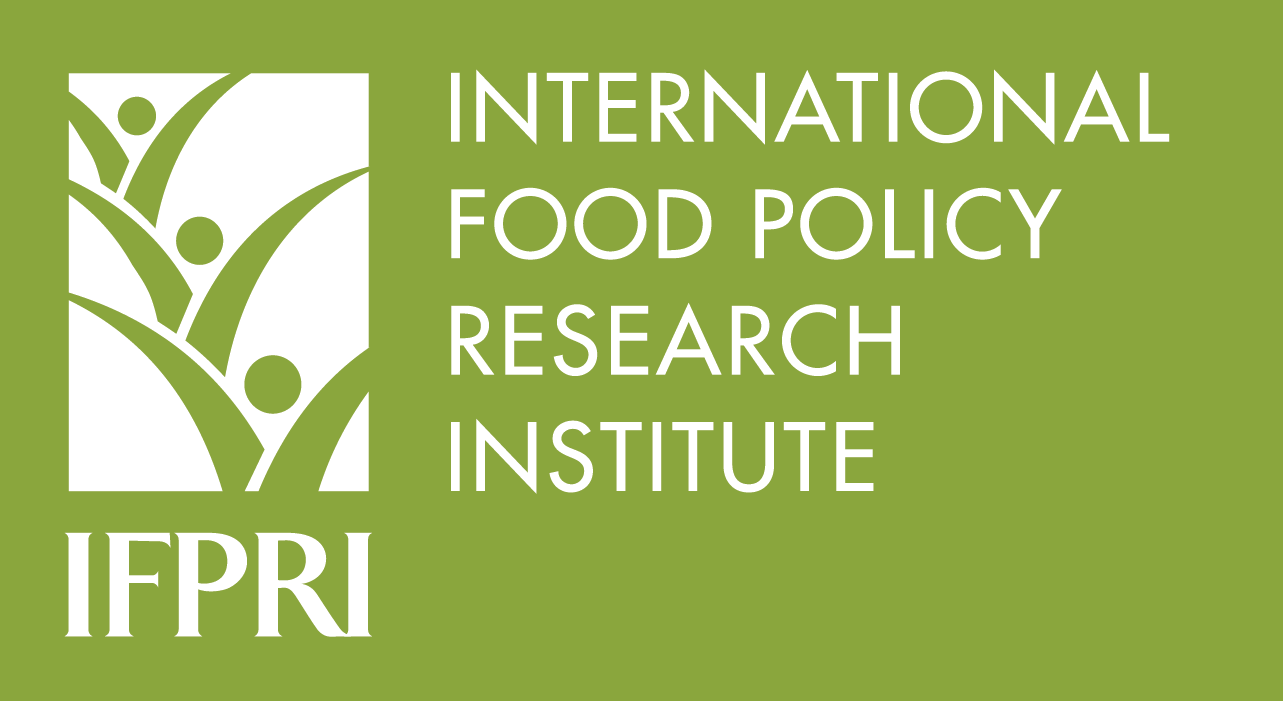Focal point
Location
About IFPRI
The International Food Policy Research Institute (IFPRI) provides research-based policy solutions to sustainably reduce poverty and end hunger and malnutrition in developing countries. Established in 1975, IFPRI currently has more than 500 employees working in over 50 countries. It is a research center of theCGIAR Consortium, a worldwide partnership engaged in agricultural research for development.
Vision and Mission
IFPRI’s vision is a world free of hunger and malnutrition. Its mission is to provide research-based policy solutions that sustainably reduce poverty and end hunger and malnutrition.
What We Do
Research at IFPRI focuses on six strategic areas:
- Ensuring Sustainable Food Production: IFPRI’s research analyzes options for policies, institutions, innovations, and technologies that can advance sustainable food production in a context of resource scarcity, threats to biodiversity, and climate change. READ MORE
- Promoting Healthy Food Systems: IFPRI examines how to improve diet quality and nutrition for the poor, focusing particularly on women and children, and works to create synergies among the three vital components of the food system: agriculture, health, and nutrition. READ MORE
- Improving Markets and Trade: IFPRI’s research focuses on strengthening markets and correcting market failures to enhance the benefits from market participation for small-scale farmers. READ MORE
- Transforming Agriculture: The aim of IFPRI’s research in this area is to improve development strategies to ensure broad-based rural growth and to accelerate the transformation from low-income, rural, agriculture-based economies to high-income, more urbanized, and industrial service-based ones. READ MORE
- Building Resilience: IFPRI’s research explores the causes and impacts of environmental, political, and economic shocks that can affect food security, nutrition, health, and well-being and evaluates interventions designed to enhance resilience at various levels. READ MORE
- Strengthening Institutions and Governance: IFPRI’s research on institutions centers on collective action in management of natural resources and farmer organizations. Its governance-focused research examines the political economy of agricultural policymaking, the degree of state capacity and political will required for achieving economic transformation, and the impacts of different governance arrangements.
Research on gender cuts across all six areas, because understanding the relationships between women and men can illuminate the pathway to sustainable and inclusive economic development.
IFPRI also leads two CGIAR Research Programs (CRPs): Policies, Institutions, and Markets (PIM) andAgriculture for Nutrition and Health (A4NH).
Beyond research, IFPRI’s work includes partnerships, communications, and capacity strengthening. The Institute collaborates with development implementers, public institutions, the private sector, farmers’ organizations, and other partners around the world.
Resources
Displaying 576 - 580 of 1521Resource-Rich Yet Malnourished: Analysis of the demand for food nutrients in the Democratic Republic of Congo
Endowed with 80 million hectares of arable land (of which only 10 percent are used), diverse climatic conditions, and abundant water resources, the Democratic Republic of Congo (DRC) has the potential to become the breadbasket of the entire African continent. Instead, the country is one of the most affected by malnutrition. The DRC has the highest number of undernourished persons in Africa and the highest prevalence of malnutrition in the world. As a result, child stunting and infant mortality rates in the DRC are also among the highest in the world.
The road to specialization in agricultural production : Evidence from rural China
Because many rural poor live in areas far away from markets, we investigate whether better road access could help improve their livelihood and reduce rural poverty. We use three waves of a primary panel survey at the household level conducted in 18 remote natural villages in China to study how road access shapes farmers’ agricultural production patterns and input uses and affects rural poverty. Our results show that access to roads is strongly associated with specialization in agricultural production.
Conflict, cooperation, and collective action
Sustaining the environmental, social, and economic development in Manupali watershed in southern Philippines is highly dependent on equitable allocation of water use rights and judicious utilization of water as a scarce resource. There are many stakeholders and water users: smallholder farmers, indigenous people, multi-national companies, the local government, the National Irrigation Administration, and the National Power Corporation (Pulangui IV). As demand for water outstrips supply, conflict arises between different user groups over who can use water and how much each one can use.
Assessing the long-term impact of microcredit on rural poverty
In recent years, microfinance institutions are seen as beacons of hope to help eradicate poverty through, among others, providing credit to poor rural households. Availability of small but repeated loans is, in the long-term, expected to impact on poverty. However, decades after the introduction of microfinance institutions into many rural areas, there are still questions as to what extent such long-term benefits are realized.
Gender Mapper
A "gender map" of agriculture in Sub-Saharan Africa in order to better understand how to target agricultural interventions to women and men farmers.



